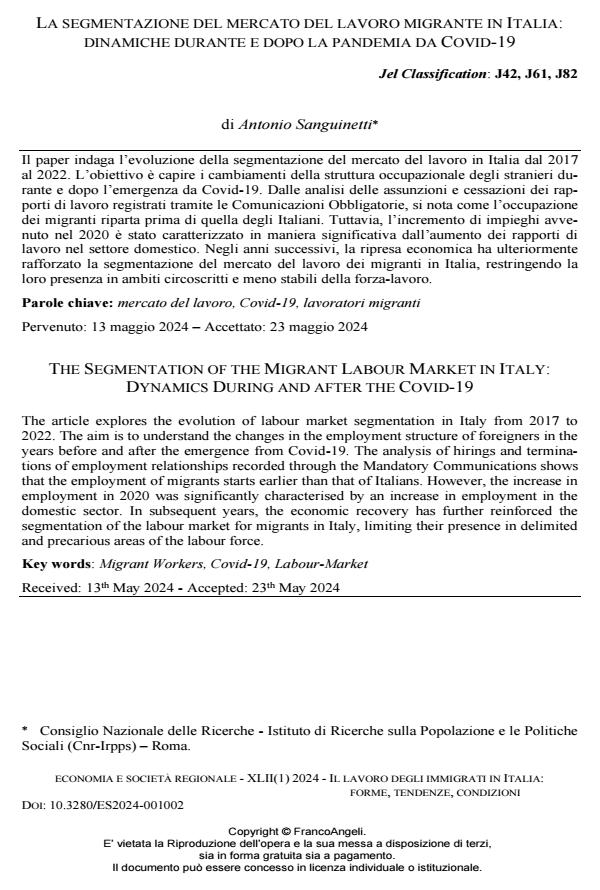The segmentation of the migrant labour market in Italy: dynamics during and after the Covid-19
Journal title ECONOMIA E SOCIETÀ REGIONALE
Author/s Antonio Sanguinetti
Publishing Year 2024 Issue 2024/1
Language Italian Pages 16 P. 11-26 File size 284 KB
DOI 10.3280/ES2024-001002
DOI is like a bar code for intellectual property: to have more infomation
click here
Below, you can see the article first page
If you want to buy this article in PDF format, you can do it, following the instructions to buy download credits

FrancoAngeli is member of Publishers International Linking Association, Inc (PILA), a not-for-profit association which run the CrossRef service enabling links to and from online scholarly content.
The article explores the evolution of labour market segmentation in Italy from 2017 to 2022. The aim is to understand the changes in the employment structure of foreigners in the years before and after the emergence from Covid-19. The analysis of hirings and termina- tions of employment relationships recorded through the Mandatory Communications shows that the employment of migrants starts earlier than that of Italians. However, the increase in employment in 2020 was significantly characterised by an increase in employment in the domestic sector. In subsequent years, the economic recovery has further reinforced the segmentation of the labour market for migrants in Italy, limiting their presence in delimited and precarious areas of the labour force.
Keywords: Migrant Workers, Covid-19, Labour-Market
Jel codes: J42, J61, J82
Antonio Sanguinetti, La segmentazione del mercato del lavoro migrante in italia: dinamiche durante e dopo la pandemia da Covid-19 in "ECONOMIA E SOCIETÀ REGIONALE " 1/2024, pp 11-26, DOI: 10.3280/ES2024-001002